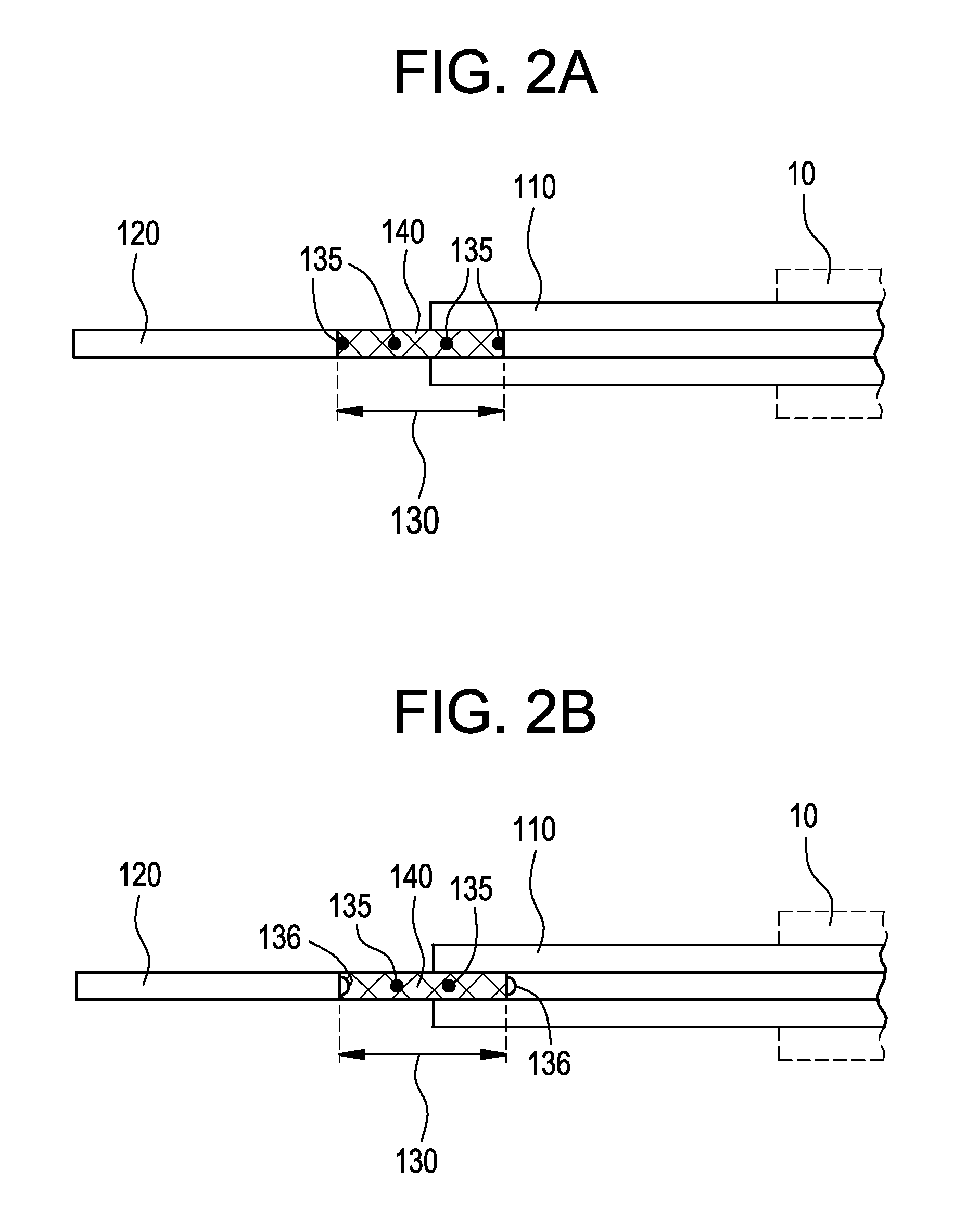Self-expanding stent delivery system
- Summary
- Abstract
- Description
- Claims
- Application Information
AI Technical Summary
Benefits of technology
Problems solved by technology
Method used
Image
Examples
Embodiment Construction
[0024]FIG. 1 illustrates a system for delivering a self-expanding stent to an intended treatment site in the vasculature of a patient, for example. The system generally comprises an introducer 10 (shown in dashed lines) and a delivery catheter 100. The delivery catheter 100 is insertable into the introducer 10 and secured by a valve 15, for example, in conventional manner, so as to restrict the delivery catheter 100 from undesirable movement when insertion and navigation of the delivery catheter 100 through the vasculature occurs. The valve 15 also minimizes, or ideally precludes, leakage of bodily fluids through the introducer where possible. The various components of the delivery system described herein are sized according to physiological and medical needs to accommodate a range of vessels or other anatomical passageways, as should be appreciated by the artisan.
[0025]Referring still to FIG. 1, the delivery catheter 100 further comprises an outer body 110, an inner body 120, and a...
PUM
 Login to View More
Login to View More Abstract
Description
Claims
Application Information
 Login to View More
Login to View More - R&D
- Intellectual Property
- Life Sciences
- Materials
- Tech Scout
- Unparalleled Data Quality
- Higher Quality Content
- 60% Fewer Hallucinations
Browse by: Latest US Patents, China's latest patents, Technical Efficacy Thesaurus, Application Domain, Technology Topic, Popular Technical Reports.
© 2025 PatSnap. All rights reserved.Legal|Privacy policy|Modern Slavery Act Transparency Statement|Sitemap|About US| Contact US: help@patsnap.com



